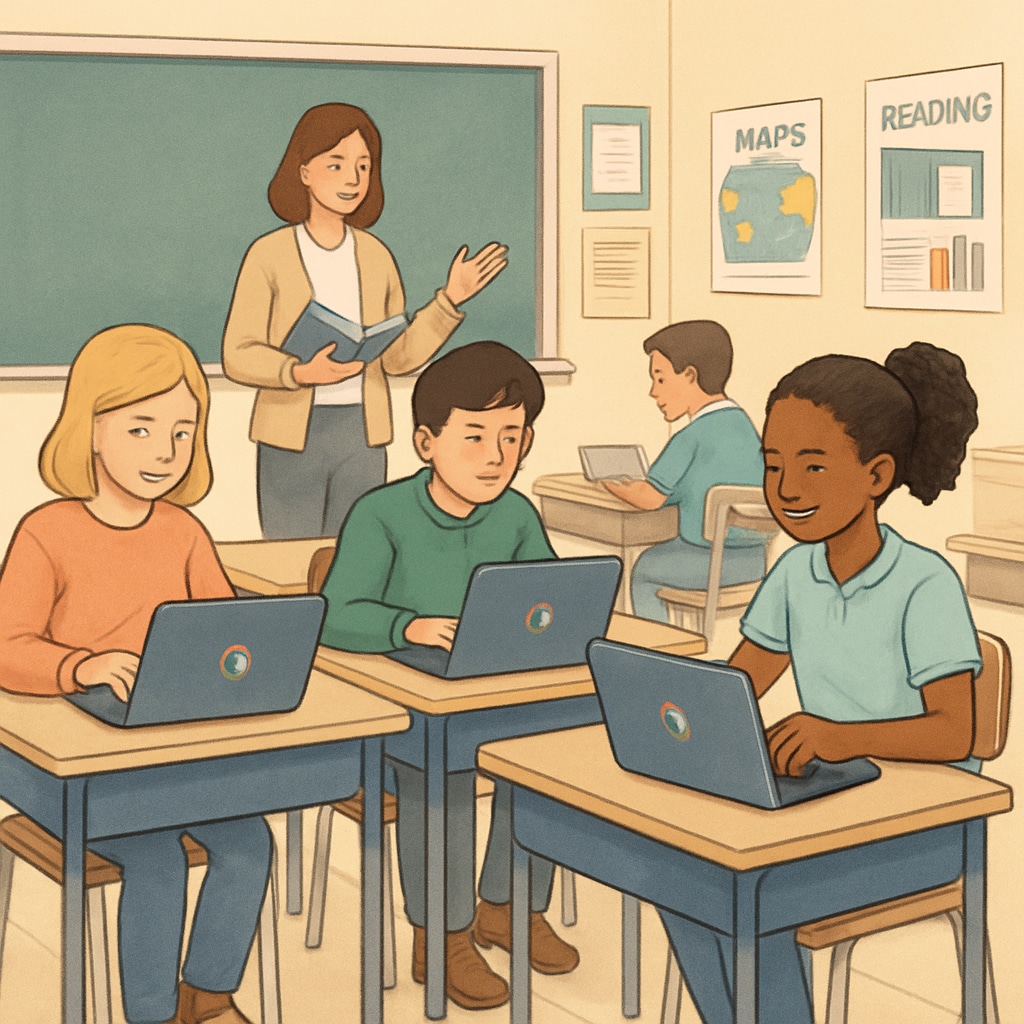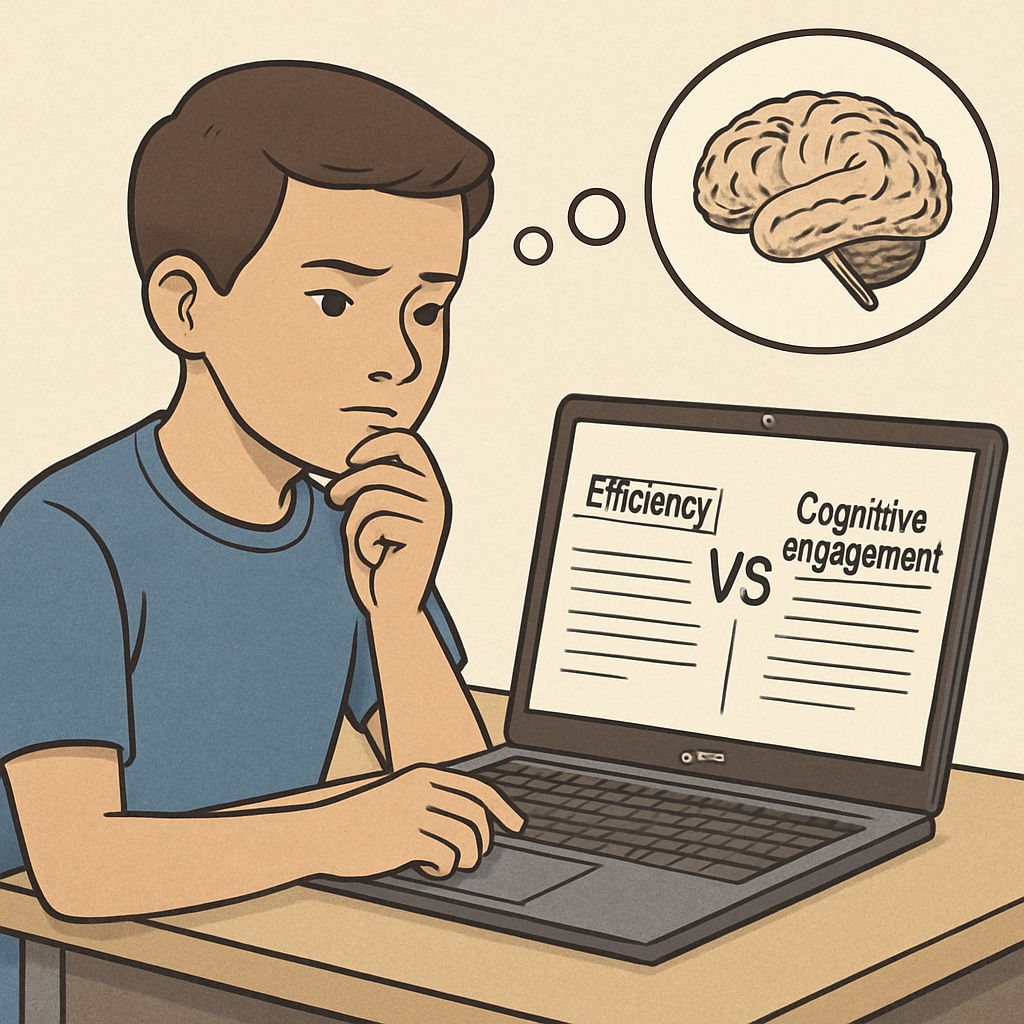In today’s K-12 classrooms, educational technology, such as Chromebooks, has become a cornerstone for efficient learning. The integration of digital tools allows teachers to streamline lesson delivery, monitor student progress, and provide instant feedback. However, this heightened efficiency comes with an important question: Is the reliance on educational technology compromising the development of students’ critical thinking skills? While tools like Chromebooks offer convenience and accessibility, educators must carefully evaluate their role in fostering cognitive abilities that extend beyond rote memorization.

Efficient Learning vs. Cognitive Growth
The allure of educational technology lies in its ability to simplify complex tasks and save time. Chromebooks, for example, offer features such as collaborative tools, instant access to online resources, and automated assessments. These benefits undeniably improve classroom efficiency, allowing teachers to focus on managing larger groups or addressing individual needs. However, some studies suggest that this focus on efficiency may inadvertently hinder the cultivation of critical thinking skills.
Critical thinking—the ability to analyze, interpret, and evaluate information—is essential for problem-solving and decision-making. When students rely heavily on pre-designed apps or automated solutions, they may miss opportunities to engage in deeper cognitive processes, such as questioning assumptions or exploring multiple perspectives. Instead of challenging ideas, they might become passive recipients of information, a trend that could have long-term implications for their intellectual growth.
The Double-Edged Sword of Chromebooks
Chromebooks exemplify the double-edged nature of technology in education. On one hand, they empower students to access knowledge and collaborate with peers effortlessly. On the other hand, their use often revolves around structured activities that may limit independent exploration. For instance, tasks completed on Chromebooks often involve clicking through predefined modules or using apps that guide students step-by-step. While this approach ensures task completion, it may inadvertently discourage the kind of free-form thinking that critical thinking demands.
In addition, the abundance of information available online through Chromebooks can overwhelm students. Without proper guidance, they may struggle to distinguish credible sources from unreliable ones. This lack of discernment can further hinder their ability to critically evaluate the information they encounter.

Strategies to Foster Both Efficiency and Critical Thinking
Striking a balance between educational technology efficiency and critical thinking development requires intentional strategies. Educators can implement the following practices to ensure that technology complements rather than detracts from cognitive growth:
- Integrate open-ended questions: Encourage students to engage with thought-provoking prompts that require analysis, comparison, and synthesis rather than simple answers.
- Teach digital literacy: Equip students with the skills to evaluate online resources critically, ensuring they can distinguish fact from opinion.
- Use technology for creative projects: Assign tasks that require students to create original content, such as presentations or research papers, where they must apply critical thinking.
- Blend traditional and digital methods: Combine technology with offline activities, like group discussions or problem-solving exercises, to foster deeper engagement.
Looking Forward: Rethinking the Role of Technology in Education
As technology continues to evolve, its presence in education is likely to grow. However, educators must remain vigilant in assessing its impact on student development. While tools like Chromebooks offer undeniable benefits in terms of efficiency, their use should be balanced with strategies that promote critical thinking. By focusing on intentional integration, teachers can ensure that technology serves as a complement to learning rather than a replacement for cognitive engagement.
Ultimately, the goal of education is not merely to produce efficient learners but to nurture inquisitive minds capable of navigating complex challenges. Educational technology, when thoughtfully employed, can play a pivotal role in achieving this dual objective.
Readability guidance: Use concise paragraphs for better readability and include lists to summarize key points. Ensure transitions (such as “however” or “in addition”) are used consistently to connect ideas smoothly.


